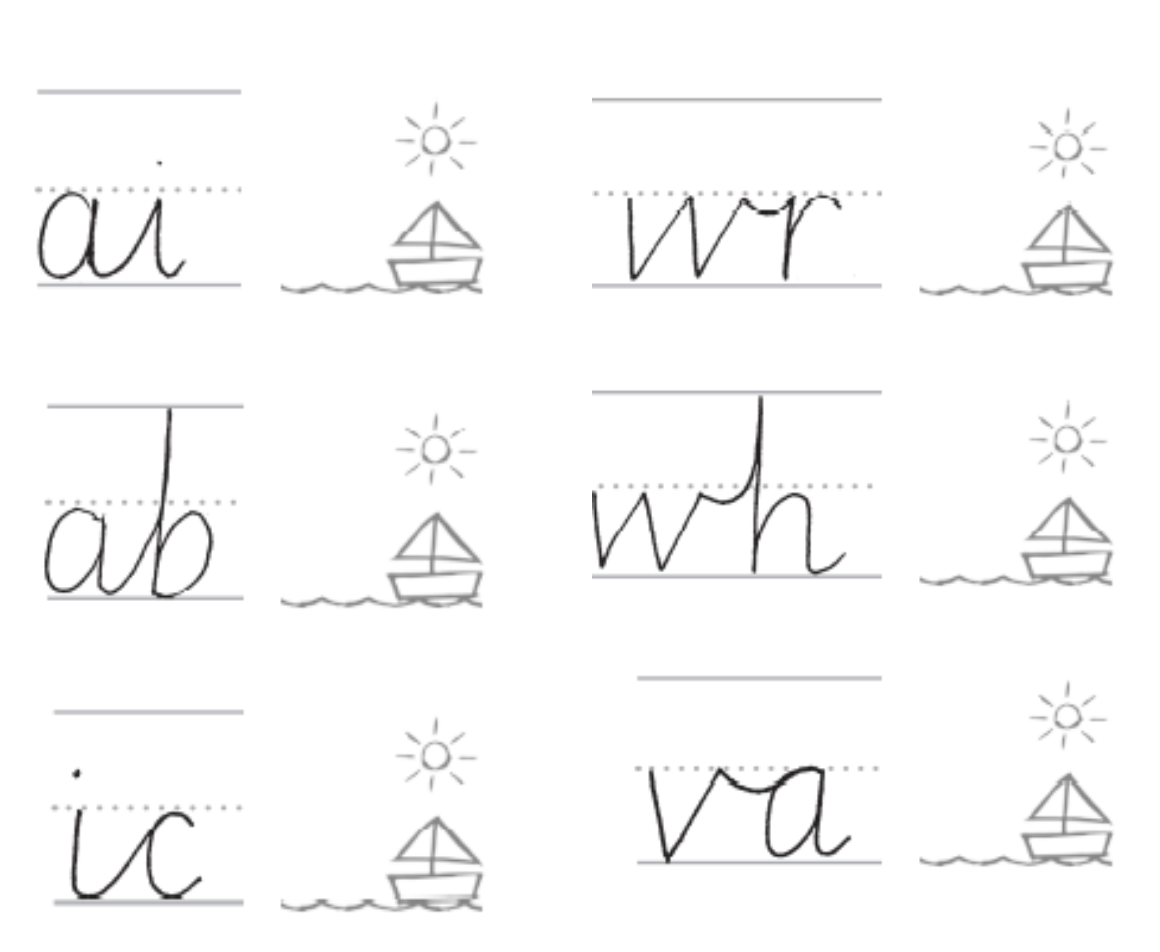Handwriting
Throughout school, children have the opportunity to see adults modelling writing, as it is from this that early attitudes to writing develop.
We aim for our children to leave in Year 6 with the ability to write using their own style of fast, fluent, legible and sustainable handwriting, as well as other styles of writing for specific purposes. In addition to teaching handwriting during our regular handwriting lessons, we have high expectations that what is taught and practiced in handwriting lessons will be used in all writing activities. Handwriting books are used for English in Year 1 and Year 2 and as an intervention for children in KS2. In addition to this, smaller handwriting books are used in spelling lessons.
We encourage, support and help to develop children’s handwriting skills from Year R. Children are introduced to letters in daily phonics lessons and taught the correct print formation using the picture side of the phonics cards.

As a pre-handwriting skill, children will also have the opportunity to develop fine-motor dexterity through threading, pegboards, jigsaws etc. Opportunities for pupils to strengthen their core, coordination, stability and upper body strength are planned through regular short movement sessions as well as through play in our learning environment.
Children experience forming patterns in the sand, finger and pencil tracing. Children who have sufficient fine-motor control can copy patterns underneath. These activities help to develop the left-to-right orientation vital to the development of reading and writing.
From Year R, we teach children to sit correctly and comfortably on a chair with their back straight, with both feet on the floor and not bending over their work. This ensures they are holding their pencil correctly, that their grip isn’t too tight and that their book is at the correct angle, being steadied with the free hand. Children are taught the correct way to hold a pencil - a tripod grip - before clear letters are being formed.
The provision of triangular pencils and pencil grips will be used as an aid where appropriate.
In Year 1 children will learn about the relative size of the letters.

Children are supported with different sized spaces between the handwriting guide lines depending on the size of their handwriting and fine motor ability. The children learn the vocabulary of top broken line, top solid line, bottom solid line, and bottom broken line to refer to each of the guide lines. The consistency in this means that all children and adults can explain where letters begin and how they are formed.

There are four sizes of handwriting lined paper with size 1 being the largest and size 4 being the smallest.
In Year 2, once children are able to form letters correctly and of the correct size, they will move to joining letters.
There are two basic joins:
• the arm join (diagonal)
• the washing line join (horizontal).
The arm join has three variations:
• a. arm to boat
• b. arm to sun
• c. arm to sister
The washing line join has three variations:
• d. washing line to boat
• e. washing line to sun
• f. washing line to sister.

In KS2, some children may still need to practise individual letter formation through intervention sessions while the majority will be continuing to learn the joins and, as they move to Year 6, developing their own handwriting style.
Children will use books with guided lines for all subjects until they are able to form all letters correctly and legibly.
A child who is left-handed may need special consideration in some areas, e.g.
-
Left-handed children should sit to the left of right-handed children to avoid their writing arms from bumping each other.
-
Their book or paper needs to be to the left of their body and may need to be slanted.
-
They may be more comfortable holding their pencil higher up.
-
They may need to use a higher chair to obtain a more comfortable body position.


